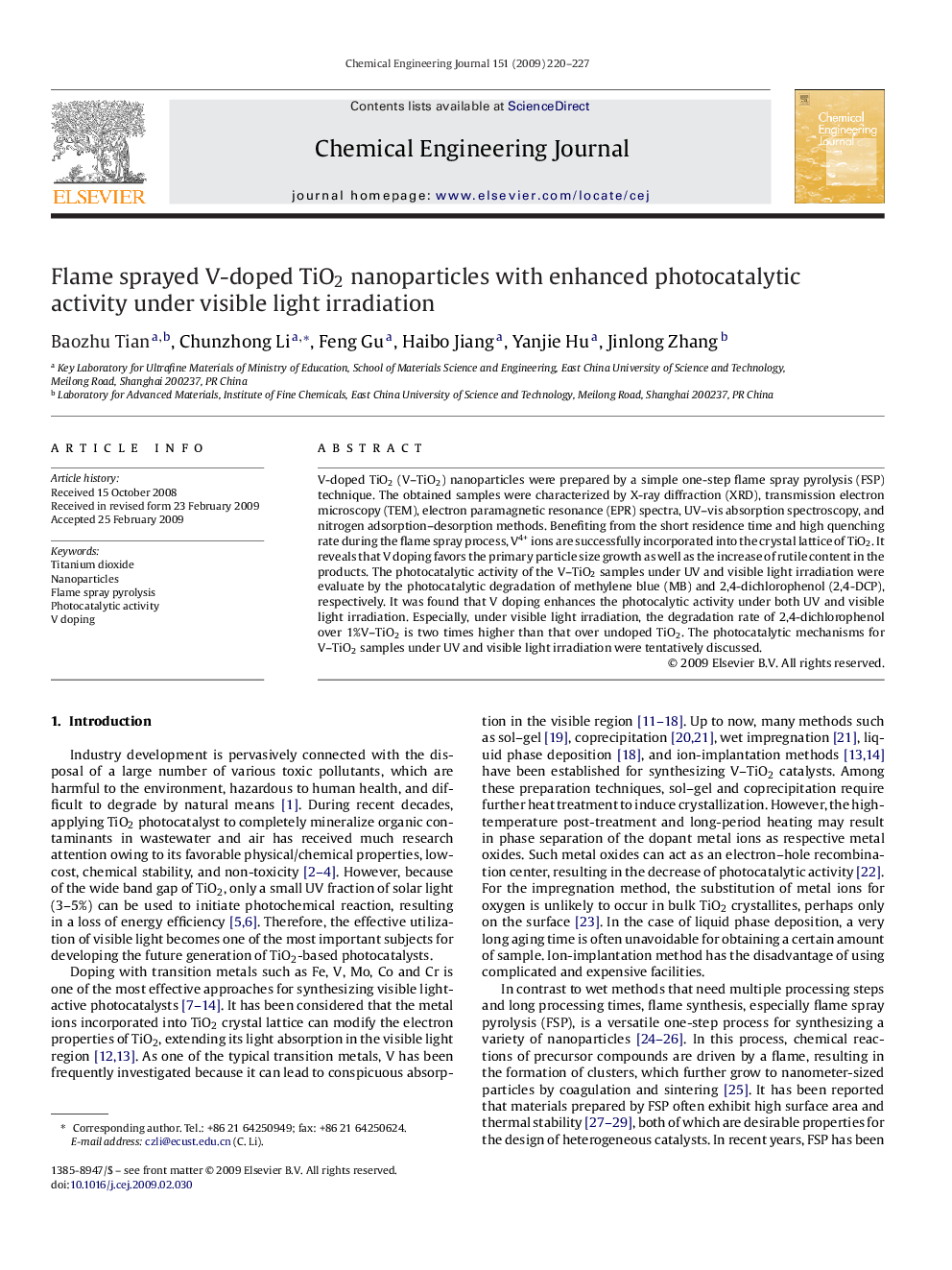| Article ID | Journal | Published Year | Pages | File Type |
|---|---|---|---|---|
| 152374 | Chemical Engineering Journal | 2009 | 8 Pages |
V-doped TiO2 (V–TiO2) nanoparticles were prepared by a simple one-step flame spray pyrolysis (FSP) technique. The obtained samples were characterized by X-ray diffraction (XRD), transmission electron microscopy (TEM), electron paramagnetic resonance (EPR) spectra, UV–vis absorption spectroscopy, and nitrogen adsorption–desorption methods. Benefiting from the short residence time and high quenching rate during the flame spray process, V4+ ions are successfully incorporated into the crystal lattice of TiO2. It reveals that V doping favors the primary particle size growth as well as the increase of rutile content in the products. The photocatalytic activity of the V–TiO2 samples under UV and visible light irradiation were evaluate by the photocatalytic degradation of methylene blue (MB) and 2,4-dichlorophenol (2,4-DCP), respectively. It was found that V doping enhances the photocalytic activity under both UV and visible light irradiation. Especially, under visible light irradiation, the degradation rate of 2,4-dichlorophenol over 1%V–TiO2 is two times higher than that over undoped TiO2. The photocatalytic mechanisms for V–TiO2 samples under UV and visible light irradiation were tentatively discussed.
